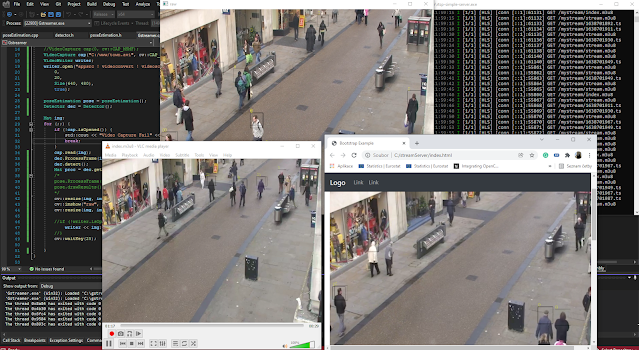opencv traincascade haar and lbp my training parameters
Opencv train cascade haar and lbp training Opencv train cascade script parameter examples for Windows. Traincascade utility is easy to use for training HAAR-like and LBP-like cascade for opencv detect multiscale by CascadeClassifier. On this blog, you can find several examples of how to detect something by the HAAR and LBP cascade.

Opencv traincascade examples
I am using this parameter. You can start where you just ended before. This makes sense. Train for 5 stages and test. If the results with a higher threshold make sense. Train again with the same script and increase numStages. After some time training is much and much slower and test before you run the training for a long time.
This is my script.. If you have any
opencv_traincascade.exe -data v -vec vec.vec -bg bg.dat -numPos 300 -numNeg 300 -numStages 10 -numThreads 2 -stageType BOOST -featureType LBP -w 32 -h 64 -minHitRate 0.995 -maxFalseAlarmRate 0.42 -maxDepth 1 -maxWeakCount 100
opencv_traincascade.exe -data vv -vec vec.vec -bg bg.dat -numPos 540 -numNeg 800 -numStages 8 -numThreads 4 -stageType BOOST -featureType LBP -w 32 -h 64 -minHitRate 0.9995 -maxFalseAlarmRate 0.32 -maxDepth 5 -maxWeakCount 120
opencv_traincascade.exe -data cascade -vec vec.vec -bg bg.dat -numPos 680 -numNeg 800 -numStages 10 numThreads 4 -stageType BOOST -featureType LBP -w 32 -h 64 -minHitRate 0.999995 -maxFalseAlarmRate 0.42 -maxDepth 10 -maxWeakCount 120 -mode ALL
opencv traincascade documentation description
Later abou this.. Complex staff. Just try example if you have some datasets prepared or know the how to prepare vector_file and background file for training.
-data <cascade_dir_name>
-vec <vec_file_name>
-bg <background_file_name>
[-numPos <number_of_positive_samples = 2000>]
[-numNeg <number_of_negative_samples = 1000>]
[-numStages <number_of_stages = 20>]
[-precalcValBufSize <precalculated_vals_buffer_size_in_Mb = 1024>]
[-precalcIdxBufSize <precalculated_idxs_buffer_size_in_Mb = 1024>]
[-baseFormatSave]
[-numThreads <max_number_of_threads = 9>]
[-acceptanceRatioBreakValue <value> = -1>]
--cascadeParams--
[-stageType <BOOST(default)>]
[-featureType <{HAAR(default), LBP, HOG}>]
[-w <sampleWidth = 24>]
[-h <sampleHeight = 24>]
--boostParams--
[-bt <{DAB, RAB, LB, GAB(default)}>]
[-minHitRate <min_hit_rate> = 0.995>]
[-maxFalseAlarmRate <max_false_alarm_rate = 0.5>]
[-weightTrimRate <weight_trim_rate = 0.95>]
[-maxDepth <max_depth_of_weak_tree = 1>]
[-maxWeakCount <max_weak_tree_count = 100>]
--haarFeatureParams--
[-mode <BASIC(default) | CORE | ALL
--lbpFeatureParams--
--HOGFeatureParams--






Thank you for sharing this.
sbobet mobileHoliday Palacem8bet